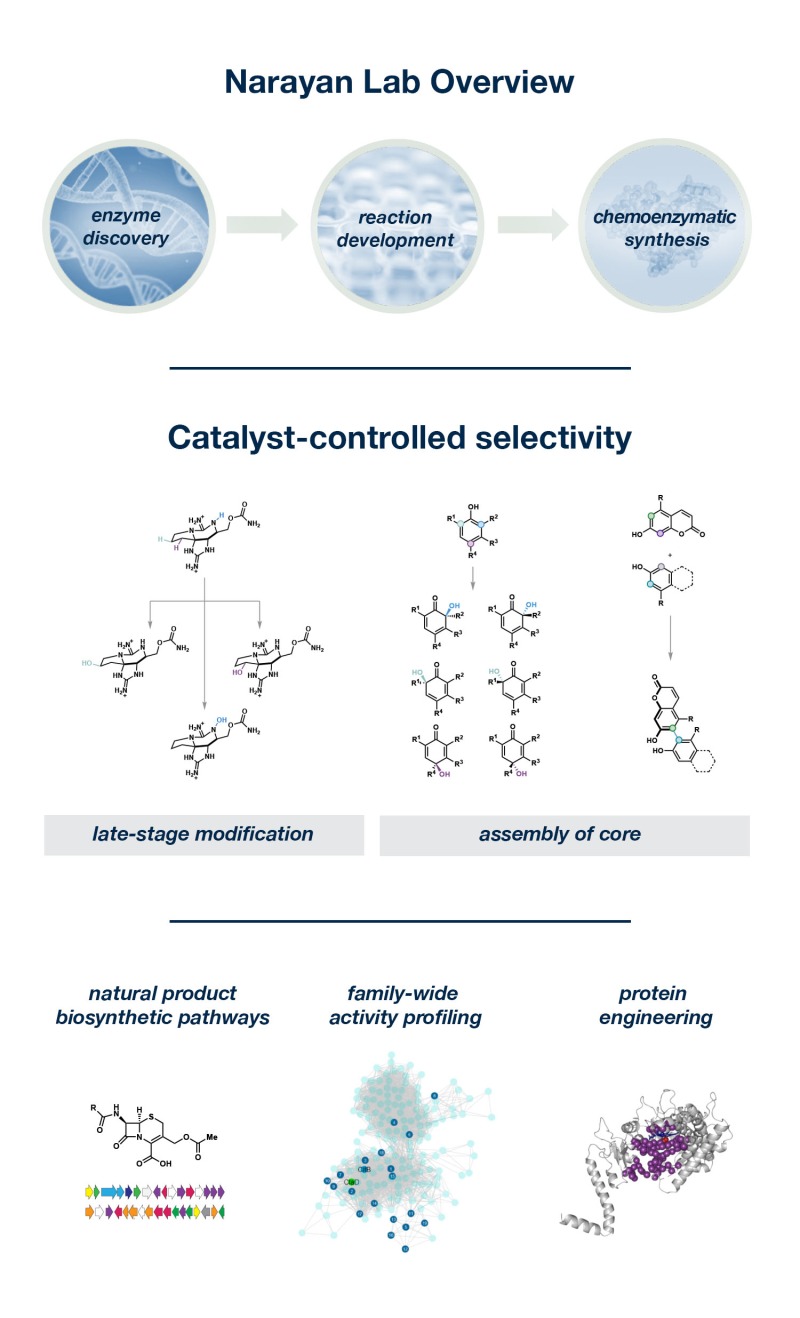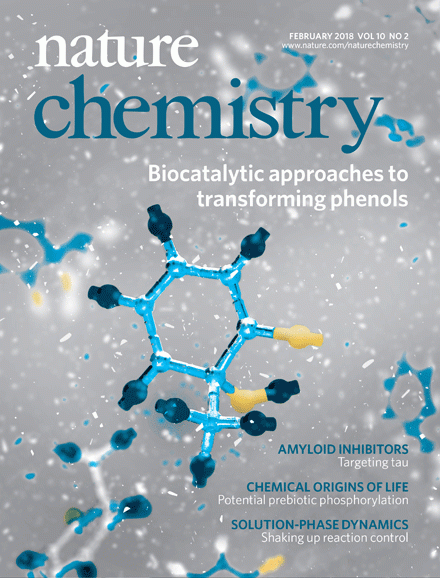Often the pharmaceutical potential of natural product scaffolds is underexplored due to the difficulty in accessing analogs to complex secondary metabolites using traditional synthetic methods. Recent advances in sequencing technology have facilitated the identification of secondary metabolite gene clusters from genomic and metagenomic samples, which has led to an explosion of newly identified and annotated secondary metabolite pathways.
In the Narayan Lab, we leverage the powerful reactivity and selectivity of enzymes from natural product pathways in concise approaches to natural products and their analogs. Projects are initiated with the identification of an enzyme with synthetic potential unmatched by chemocatalytic methods and continue by demonstrating the substrate scope and potential applications of the biocatalyst including the synthesis of biologically active molecules. Synthetic efforts feed biological studies on activity, which inform the subsequent selection of synthetic targets.




